Top 10 Most Chilling and Mesmerizing Photographs Taken During War
Like the old saying says "A picture is worth a thousand words". Though, war, with all of its senseless bloodshed and disregard for humanity that only brings misery and the worst out of humanity is also a gold mine of these expressions. Visualized either through film footage or pictures. These pictures tells a different story of armed conflicts that goes around our safe-haven and might hit close to home.I will include pictures of these photographs in this list later if I had the time to do it.
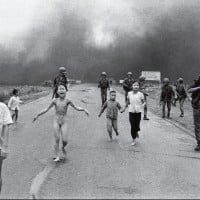
The "Napalm Girl" picture prominently features a naked young girl (as well as several other children and American soldiers) running down a road. The girl's body was heavily scarred as her back was burned by napalm. It was taken in 1972 in Trang Bang, South Vietnam during the Vietnam War. The picture continued to win a Pulitzer Prize for raising issue of the war back at home, and the girl in the picture lived and became a famed author and UN Goodwill Ambassador.
Excellent list.
Now about this photo, it is genuinely depressing and somber. But that doesn't change the fact that it is important and continues to be relevant for the present day.
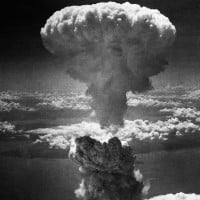
The nuclear bombing photo shows a mushroom cloud in Nagasaki after B-29 planes carrying "Fat Man" atomic bomb was dropped on Nagasaki. We all know what happened from there, 80 thousand people were killed in Nagasaki by the atomic bombing alone. The picture delivers us a chilling reminder of the deadliness of atomic bombs and how close we were to a nuclear war during the Cold War afterwards.
This image has become famous. A list that should have been featured
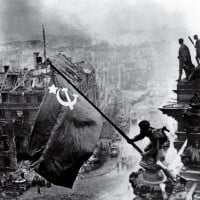
The picture features a group of Soviet soldiers on top of the Reichstag building, a symbol of Nazi political supremacy, with one soldier notably raising the Soviet flag on top of the building during the Battle of Berlin in 1945. Though, the soldier who raised the flag was killed afterwards by a sniper round, the man was venerated for his role and the picture continues to go on as a defining symbol of the defeat of the Nazis in WWII.
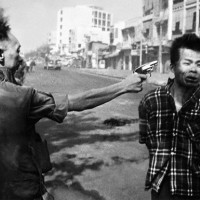
This picture shows the last moments of Viet-Cong fighter, Nguyen Van Lem, before getting summarily executed by South Vietnamese police commander (Nguyen Ngoc Loan) in Saigon during the Tet Offensive. The picture won a Pulitzer Prize but raised a lot of controversy around the Vietnam War where anti-war sentiments began to grew after the circulation of this chilling picture.
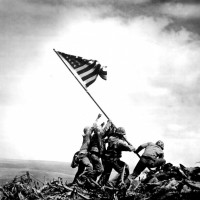
This iconic photograph of the Pacific Theater depicts six US Marines raising the American flag on top of Mount Suribachi during the Battle of Iwo Jima. Taken in February 1945, the photograph became so popular that it won a Pulitzer Prize and was regarded as one of the war's most recognizable images. Some of the Marines lived to tell the tale of their exploits although some of them died afterwards during the battle itself.
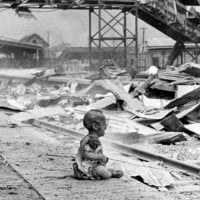
The picture depicts a crying and scarred Chinese child left to die in the decrepit ruins of the Shanghai South Railway Station during the Sino-Japanese War. Illustrated as a cultural icon depicting Japanese war-time brutality. The picture was one of the most famous wartime photos of the 1930s and helped negatively influence Western perception on the Japanese government during the war.
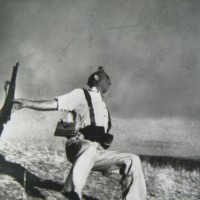
The picture features a Spanish Republican militia moments before falling into the ground after being shot. The picture had circulated throughout America and Western Europe which helped in raising awareness of the Spanish Civil War as well as inspiring young men to fight on the Republican side of the war. Though, after it was photographed, many had questioned the authenticity of the picture itself.
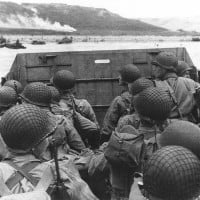
The picture shows a company of American soldiers in landing docks moments before emerging to conduct the D-Day invasion. By seeing this picture, words cannot comprehend what these men had to go through emotionally before their daring assault on German lines in Normandy.
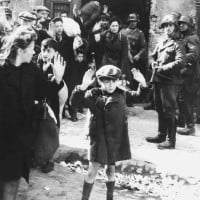
The picture shows a group of Warsaw Ghetto Jews surrendering after getting caught by Wehrmacht German soldiers. One of the things that stood out in the picture was the young boy who raised his arms in surrender and expressed fear upon getting caught. Nonetheless, it showed the world of the dire situations in German-occupied Warsaw and raised awareness of Germany's draconian anti-semitic laws.
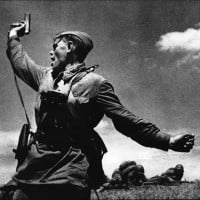
The iconic black and white picture shows a Soviet political commissar raising his TT-30 pistol up in the air as he calls his men to go forward in battle during Operation Barbarossa. This work is regarded as one of the most iconic Soviet photographs during WWII and was immortalized in statues and iconography although the identity of the man and where or when was it taken remains unknown. However, historians agreed that the men shortly died afterwards after this picture was taken on 12 July 1942.
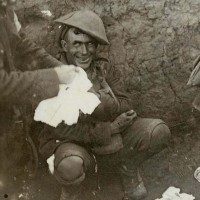
The photo shows a shell-shocked British soldier laying down in the trenches with a huge and sinister-looking grin on his face. Looking at his facial expressions, you can see how much hell this man had endured in battle.
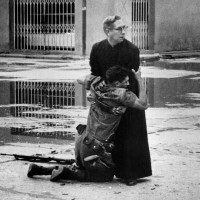
The Pulitzer-winning photograph depicts a wounded soldier after being shot by a sniper round trying to find comfort in his final moments by clutching on a priest's robes during Venezuela's most turbulent years. Religious or not, you cannot how powerful this photo really is.
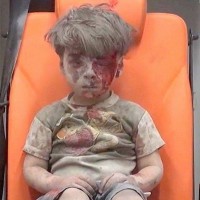
Just like Bloody Saturday, this photo shows a Syrian boy (Omran) who managed to be rescued from a rubble of his destroyed house covered in blood and dust after being exposed to intense battles from his hometown in Aleppo. He is shortly hospitalized afterwards. However, the authenticity of the picture was questioned by many as propaganda.
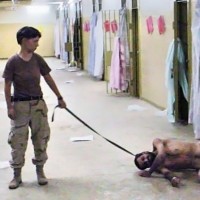
This photo shows a US military personnel holding a leash attached to a tortured prisoner's neck in Abu Ghraib during America's War on Terror. The photograph was met with backlash and the personnel involved in the incident were dishonorably discharged and sentenced in a military tribunal.